More transmission? They’re nuts!
August 19th, 2019
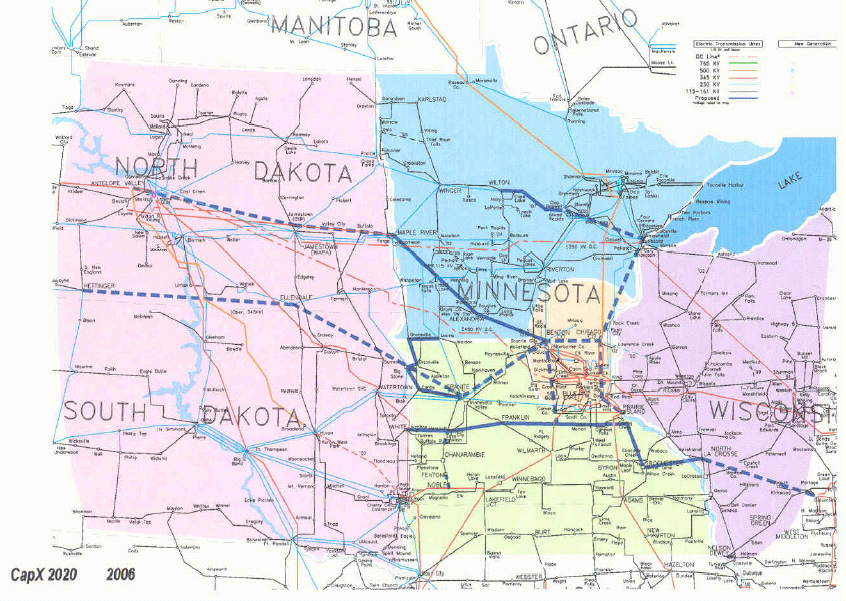
I saw this today and it’s nauseating.
First there was CapX 2020 transmission (following Arrowhead transmission, which was supposed to be the be-all and end-all of transmission)(and the SW MN 345kV line, precursor to CapX 2020. CapX transmission was based on a forecasted 2.49% increase in demand, which as we know, didn’t happen.

And there was the MISO 17 project MVP Portfolio:

Tomorrow, the Wisconsin Public Service Commission is making its decision regarding the Cardinal-Hickory Creek project, the southern part of #5 above, and the LAST of the MVP projects to go through state administrative approval.
So today, this is in the STrib:
Minnesota utilities will study if the $2B CapX2020 grid improvements were enough
By Mike Hughlett Star Tribune AUGUST 19, 2019 — 3:05PM

Photo: DAVID JOLESA utility worker assesses electrical power lines in south Minneapolis.
So that said, here’s Xcel Energy’s Integrated Resource Plan’s Appendix on transmission:Xcel IRP – Appendix I – Transmission & Distribution – from 20197-154051-03Download
The schedule for IRP hearings was just released, it’s in October, so there’s time to make time for it:
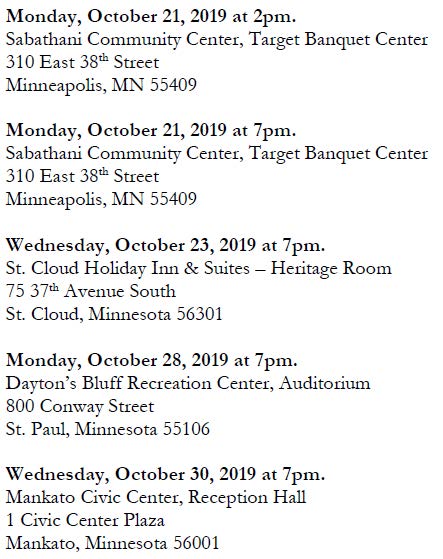
We know Xcel Energy gets a “handsome” rate of return for transmission capital expenditures (hence “CapX transmission), so of course they want to build more. The IRP is our time to tell them how they should get the electricity they need, whether their plans are making any sense.
How about shutting down some of those coal plants, and freeing up some capacity? How about siting solar on every rooftop, over every parking lot, putting the generation at load so we don’t need transmission? Oh, but wait, that makes too much sense, especially where a utility wants to keep control of the generation, and the expenditures, and rake in the dough.
Time to pay attention to the IRP. URP!
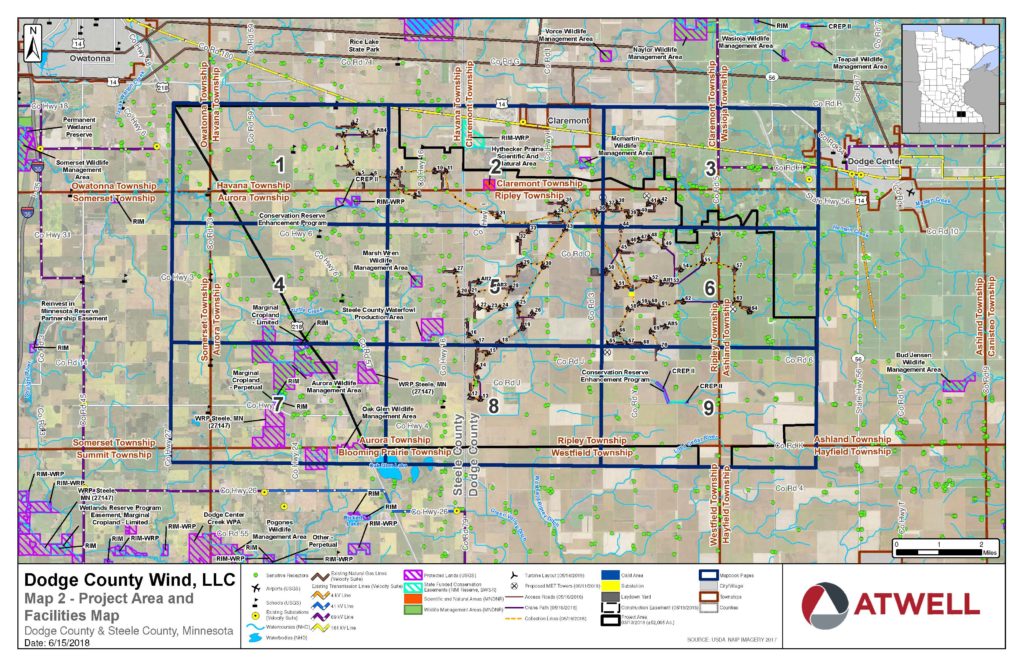
Oh my… just in, a request to suspend the permitting schedule for Dodge County Wind, the Certificate of Need, the wind site permit, and to WITHDRAW the transmission route permit!
There are 3 Dodge County Wind dockets, a Certificate of Need (17-306), wind siting (17-307), and transmission (17-308). Process wise, it goes to PUC for approval, and the PUC will probably announce a comment period in all 3 dockets. Then Commission will meet, and approve the withdrawal of the transmission without prejudice, so they can refile when they have a workable plan. That withdrawal process will take some time.
That time is an issue, because I don’t see any way they can come up with a transmission plan and get it through the MISO transmission studies to get a permit and start construction by year end. Tax credit implications — they have a problem.
As to the suspension of Certificate of Need and wind siting application proceedings, I’d like to see them dismissed without prejudice also, not suspended, gumming up the works at the Commission. We shall see.
This transmission was absurd from the get-go, a 345kV line with what, a 2,200MVA capacity, for a 170 MW project? They said it was part of a regional interconnection, from the application:

Oh, really? Don’t see it in the MISO MTEP. It’s not… and it’s a radial line, and you just don’t build short radial 345kV lines!
Here are Dodge County Wind’s requests for suspension and withdrawal:
“On August 9, 2019, DCW withdrew its MISO interconnection queue position no. J441, because of the significant interconnection costs associated with that queue position.”
Oh my… what does the MISO DPP Report have to say about that? Just search this report, issued July 25, 2019, for “J441.”
I figured the PUC should have that MISO report in the record:



And check out the summary page on p. 149 of the 150 page pdf.
After getting the 345kV route alternatives “C” and “D” ejected, not to be considered in the FEIS, this is just the icing on the cake!!
Dodge Center Xmsn – Mission Accomplished!
Here’s some background info from just over a year ago:
Dodge County Wind info presentation
July 29th, 2018
From the very beginning, with Dodge County Concerned Citizens working hard to inform people of the project, all three dockets, and Dodge Center’s Tom Applegate going door to door and encouraging people to write comments and send photos showing how the transmission line would affect their neighborhood in Dodge Center, this public input helped call the entire project into question. With the DEIS rejecting transmission alternative routes C and D, and with the MISO interconnection study showing so many network upgrades needed at a very high cost, this project is no longer viable. The people affected by this project have had a tremendous impact.
Dodge Center Xmsn – Mission Accomplished!
July 30th, 2019
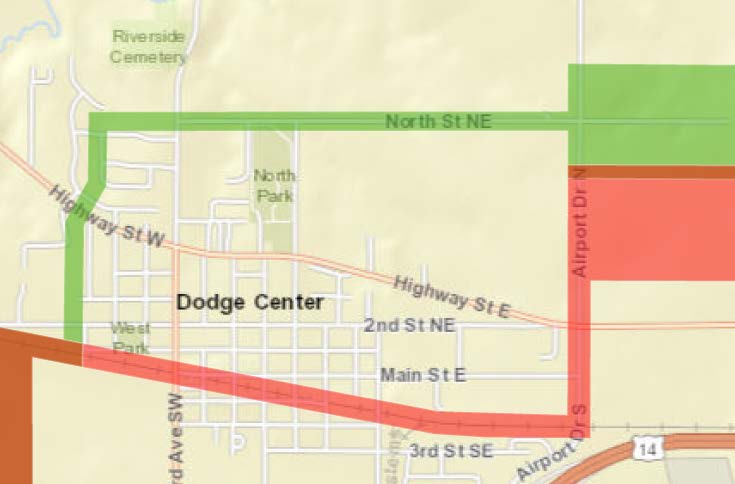
The Minnesota Department of Commerce issued the Draft EIS for the Dodge County wind project, and about the “C” and “D” route proposals for a 345kV line through the heart of Dodge Center, they had this to say:

Here’s the full DEIS Narrative:
This is an example of why it’s crucial to get involved early, that comments must be made at the outset before they have moved into evaluating a proposed route, so that they can consider the input of people on the ground in the initial evaluation. Here, at least 14 people weighed in on the impacts of the C and D routes on their homes and their lives, and that message was heard.
Now’s the time for the City of Dodge Center to acknowledge that it was Tom Applegate’s efforts, alerting the City of Dodge Center and the residents effected by this project’s Route C and D possibility, helping generate the many comments that were filed, that made Commerce’s rejection of these routes a reality.
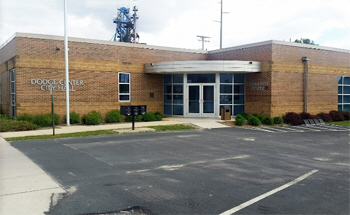
And I sure hope Commissioner Tuma acknowledges what a bad idea routes C and D were and that next time he has a routing idea, that he commits to spend at least an hour on google earth along the route to know what he’s proposing. These two proposed routes were the worst I’ve seen for a 345kV line.
Cardinal-Hickory Creek webcast!
June 15th, 2019

NEXT WEEK, LIVE AT PUBLIC SERVICE COMMISSION, starts 9:30 a.m., they’ll update link just before then:
http://apps.psc.wi.gov/vs2017/eventscalendar/broadcast/livebroadcast.aspx
Dodge Center 345 kV transmission?
June 15th, 2019

I’ve been trying to figure out where the notion of these two routes through Dodge Center originated, and went back to the Public Utilities Commission meeting video of the March 5, 2019 meeting. We have Commissioner Tuma to thank for this hare-brained idea:
Check this video (how long do they leave them up) between 7:09 and 24:50: http://minnesotapuc.granicus.com/player/clip/894?view_id=2
Commissioner Tuma suggested this right out the gate. He said “I went and google mapped… walked through these cities and unless you put it on the same pole, you’re not going to do it.” EERA’s Steinhauer’s befuddlement is apparent, and to include these route proposals in the Scoping Decision is an absolute waste of time — if Tuma had indeed gone over the routes on google earth, if he had any notion of the width of a 345kV transmission line… Earth to Mars, even if you put it on a pole, you’re not going to do it. This is what it looks like on Google Earth:
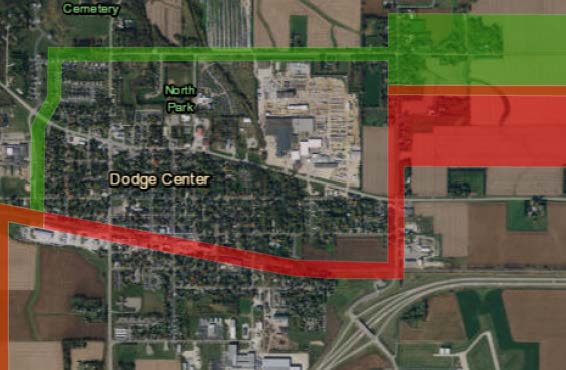
Here’s the letter we sent to Commerce yesterday — the green and red routes through Dodge Center are not workable in any sense. Look at the impact on the folks who live there — people who would be uprooted from their homes:
This is the letter sent by the City of Dodge Center.
It’s something, it’s a start, but there are basic factual errors, i.e., “200 feet” mentioned twice?

Where did they get that “200” number from? 345kV easements are 150 feet, yet this 200′ is repeated over and over, and no where is there a mention of 200 feet. It also makes light of the reality of what these routes would mean, i.e., “passing within 200 feet,” rather than saying that at least ______ homes would be within the easement, residents/landowners would be displaced, and properties would be razed and clear cut. “Passing within” is just too passive…
The good news is that the City has committed to attending and speaking up at future hearings if these routes should go forward. In light of the reality of these proposals, I don’t see how Commerce could recommend they go further.
Back to the video, between 7:09 and 24:50: http://minnesotapuc.granicus.com/player/clip/894?view_id=2
In the video above, Commissioner Tuma kept referring to Freeborn, and I don’t see a similar issue here. ??? He spoke of landowners objecting, and of course landowners object, but what is the connection or similarity with the routes he’s proposing? And it was good to hear Commissioner Schuerger raising the oversized 345kV line. That’s utterly absurd, and I sure hope they get into the reasoning behind that. I’ll bet it’s all about financing and that the developer wouldn’t be held responsible for costs if it’s part of a regional system build-out like MVP.
Onward… it’s obscene to think that a transmission line of this size can be run through Dodge Center, run through people’s yards, over their homes, to waste people’s time, and subject them to this bogus “alternative” with the specter of ejecting them and bulldozing their homes.
NO! JUST NO!